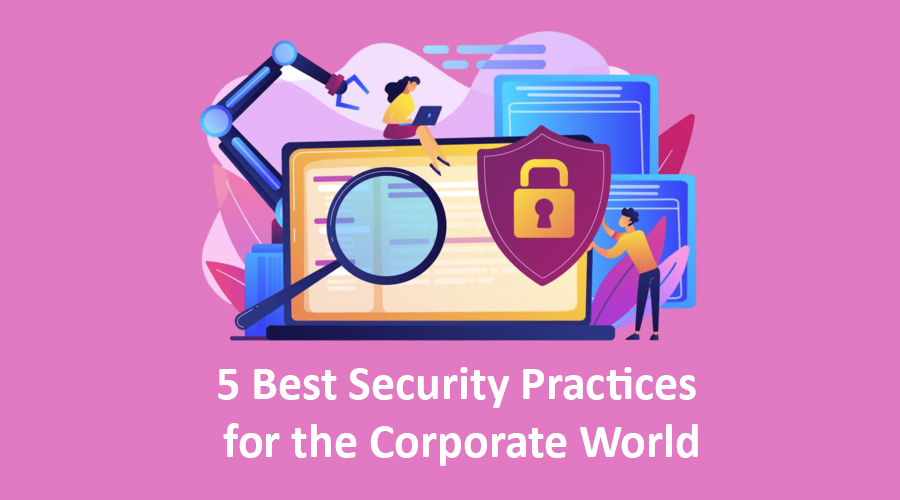
In an era defined by the omnipresence of digital technology, security is an imperative concern for corporations worldwide. The corporate landscape, a reservoir of invaluable data and assets, is an alluring target for cybercriminals. Safeguarding sensitive information, preserving customer trust, and ensuring seamless business operations demand a steadfast commitment to cybersecurity. In this article, we delve into the five paramount security practices every corporation should embrace to fortify their defenses and navigate the ever-evolving digital threat landscape with confidence.
Tested Security Practices for the Corporate World
Keeping sensitive information safe online is crucial in today's highly linked world. Companies are prime targets for cybercriminals because they house vast stores of money, data, and other resources. A business that cares about its assets and the respect of its customers and suppliers will take security seriously. The five most secure practices can benefit any company.
Regular Software Updates and Patch Management
Cybercriminals can easily exploit outdated applications and unpatched operating systems. In order to break into a company's network, hackers will often use a well-known exploit. According to ISO 27001 standards, companies must create a reliable patch management procedure to safeguard sensitive information of the company. Keep your software and operating systems up-to-date and install any new security patches as soon as they are released.
Patch management automation helps streamline the process and prevents missing any mission-critical updates. Keeping your systems patched makes it harder for attackers to exploit previously discovered flaws.
Incident Response Plan
It is possible for security breaches to occur despite your best efforts. Damage and downtime can be reduced significantly with a well-defined incident response plan. Who to notify, how to isolate compromised systems, and how to notify stakeholders are just some of the items that should be covered in your incident response strategy.
To make sure your team is ready to respond effectively in a crisis, run tabletop exercises and simulations on a regular basis to test your incident response strategy. Your ability to lessen the blow of an occurrence increases with the speed and effectiveness of your response.
Network Security and Access Control
Limiting the number of people who can log into your company's network is essential. Segment your network so that only authorized users can access the sections containing your private information. Make sure that staff only have the degree of access they need to do their jobs by reviewing and updating user access privileges on a regular basis. This lessens the likelihood of insider threats and mitigates the impact of a breach.
For better network security, you should install intrusion detection and firewall solutions. Keep an eye on them and make adjustments as needed so that they can counteract new dangers. Sensitive information should be encrypted both while in transit and while stored to prevent unauthorized access.
Employee Training and Awareness
The human factor is frequently the cybersecurity chain's weakest link. When workers do things like fall for phishing scams or download malware without meaning to do so, they put their employer at danger. Investing in extensive cybersecurity training for all staff can help reduce this risk. Make that they understand the significance of secure passwords and how to spot phishing efforts.
Due to the ever-changing nature of cyber dangers, it is crucial that this education be regularly updated. Foster an environment where employees are open and comfortable reporting any cybersecurity issues they encounter. In the fight against cybercrime, well-informed and ever-vigilant staff members are a vital first line of defense.
Strong Password Policies
Most corporate networks have their initial line of defense in passwords. Passwords that are simple to guess or otherwise insecure should be changed immediately. Passwords should be long and complicated, containing a mix of upper- and lower-case letters, digits, and special characters.
Think about using MFA (multi-factor authentication) anytime you can. With multi-factor authentication (MFA), users are required to verify their identities in more than one way, for example by providing information about both themselves and their device. This drastically lessens the possibility of theft or hacking.
Endnote
Cybercrime is an ever-evolving threat to modern enterprises. The top five security practices are as follows: employee education and awareness programs; secure password policies; consistent software update and patch management; secure networks with restricted access; incident response plans. Everyone in the company needs to keep the importance of preventing cyberattacks on the business in the forefront of their minds at all times.




